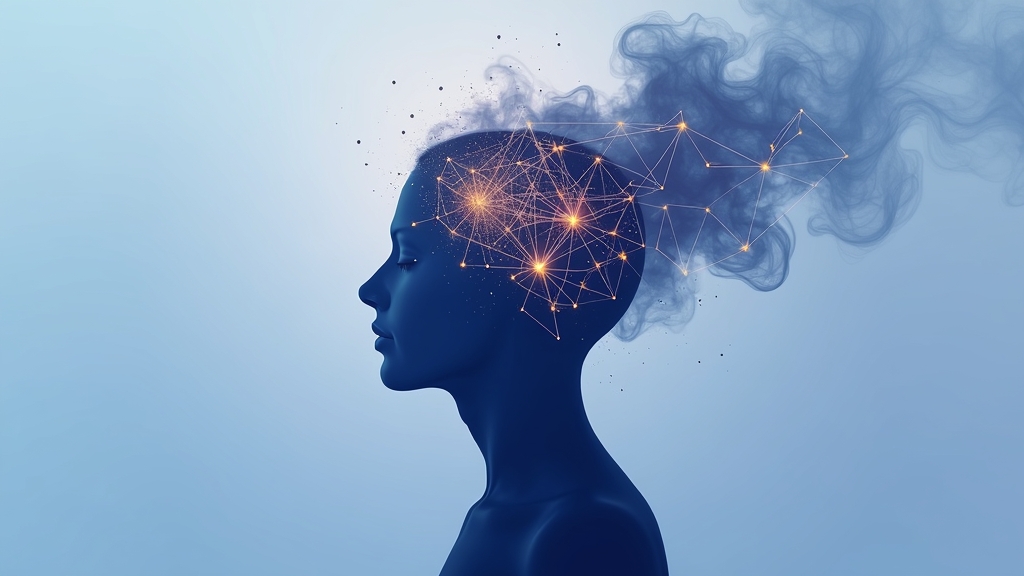Advertising
Have you ever stopped to observe how your mind seems to have a life of its own, creating stories and scenarios that generate anxiety without your permission? These negative mental patterns often operate on autopilot, shaping our reactions and emotions without us realizing it. Mindfulness meditation is a powerful tool for breaking this cycle, offering a new relationship with our thoughts.
What negative mental patterns are and how they affect us
Negative mental patterns are like well-worn neural pathways in the brain - habitual thought paths that get stronger every time we walk them. They manifest as constant internal criticism, catastrophizing of simple situations or that little voice that always expects the worst possible outcome. These patterns not only distort our perception of reality, but also activate stress responses in the body, affecting our physical and mental health.
Imagine waking up late and immediately thinking "my day is ruined" - this is a classic example of a negative pattern in action. That single thought can trigger a cascade of reactions: irritation, unnecessary haste and even impulsive behavior. Over time, these patterns become so automatic that we don't even notice their influence on our decisions and well-being.
The cost of these patterns is real: they can lead to chronic anxiety, depression, insomnia and even relationship problems. The first step towards change is precisely to recognize that these patterns exist and that we are not obliged to accept them as absolute truths. How about starting to observe how many times today your mind has followed these automatic paths?
The neuroplastic mechanisms of mindfulness meditation
Neuroplasticity - the brain's ability to reorganize itself and form new connections - is the key to understanding how meditation transforms mental patterns. Neuroimaging studies show that the regular practice of mindfulness literally rebuilds brain circuits, strengthening regions associated with emotional regulation and weakening those linked to automatic reactivity.
During meditation, when we observe thoughts without judgment, we are essentially training the brain to create space between stimulus and response. This space, which can last mere seconds, is where our freedom of choice resides. Every moment of mindfulness is like a weight training exercise for the prefrontal cortexThis is the area responsible for executive functions such as decision-making and impulse control.
Research by Harvard Health Publishing show that eight weeks of meditation practice already produces measurable changes in gray matter. The amygdala, our danger alarm center, literally decreases in volume, while areas related to memory, empathy and sense of self are strengthened. Isn't it fascinating how we can intentionally shape our own neural architecture?
Specific practices for identifying automatic patterns
The beauty of mindfulness meditation lies in its immediate practical applicability. One powerful technique is the "labeling" of thoughts: when you notice a negative pattern arising, mentally name it "worry", "judgment" or "self-criticism". This simple act of naming immediately creates distance from the content of the thought, allowing you to observe it without merging with it.

Another effective practice is RAIN (Recognize, Accept, Investigate, Non-identify), an acronym that guides a process of compassionate investigation of mental patterns. First we recognize what is arising, then we accept its presence without fighting it, we investigate with curiosity how it manifests in the body and finally we practice not identifying with it - "that's a thought, it's not me".
Try it now: for a minute, just watch your thoughts pass by like clouds in the sky, without holding them back or pushing them away. Notice how some are repeated, like old recordings. This recognition is already the beginning of transformation. O Mindful.org offers excellent free guides for these initial practices.
Transforming your relationship with negative thoughts
Here's a secret that few people understand: we don't need to eliminate negative thoughts to be happy. True freedom comes from changing our relationship with them. Through meditation, we learn that thoughts are just passing mental events, not necessarily truths or commands that we must obey.
When a thought like "I'm not capable enough" arises, instead of diving into it or trying to suppress it, we can simply note it with curious interest: "Ah, there's that old pattern of self-doubt again". This change from "that's true" to "that's a thought" is revolutionary - It's like watching a movie knowing it's fiction, instead of believing it's a documentary.
Over time, this new relationship creates deep mental resilience. Situations that once triggered spirals of anxiety now become opportunities to practice presence. You begin to realize that you have a choice: you can follow the old pattern or you can breathe, observe and respond more wisely. Isn't it liberating to know that you don't have to believe everything your mind produces?
Integrating mindfulness into everyday life
The real transformation happens when we take mindfulness off the meditation cushion and into our daily activities. Brushing your teeth with full attention to the tastes and sensations, washing dishes feeling the water on your hands, truly listening to someone without mentally formulating answers - these are all moments of informal practice that reinforce new neural connections.
Create "mindfulness anchors" throughout your day: every time you pick up your cell phone, take three conscious breaths before unlocking the screen. Every time you walk through a door, use it as a reminder to check your posture and breathing. These micro-moments of presence are just as important as formal sitting practice - they train the brain to get out of autopilot in the flow of real life.
How about starting today? O Smiling Mind offers free guided meditations for beginners. Remember: consistency is more important than duration - five minutes a day will do more for your mind than an hour once in a while. The journey of mental restructuring begins with a single conscious breath, and another, and another...